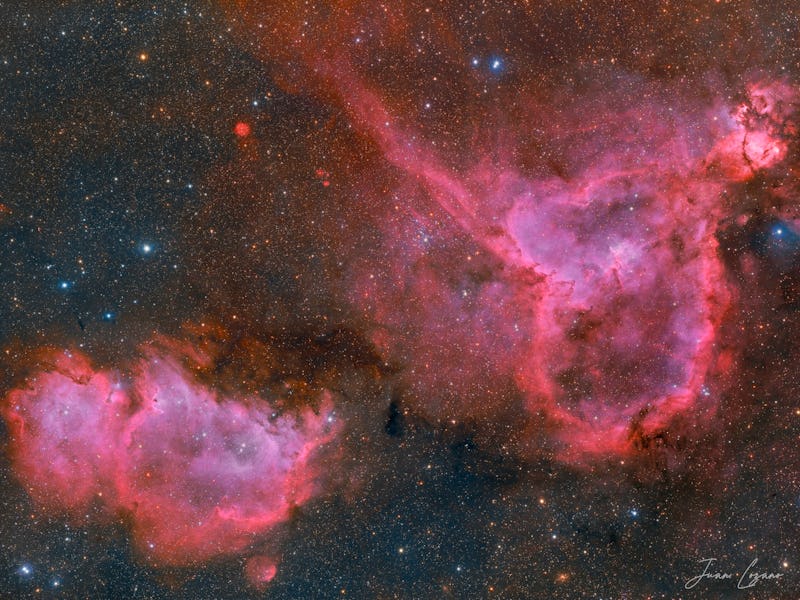Look! Gorgeous New Space Image is Your Valentine From the Universe
Give them what they really want this year -- glowing clouds of molecular hydrogen.

With powerful stellar winds and blazing hot radiation, dozens of young stars have spent the last million years carving a vaguely heart-shaped bubble in surrounding clouds of interstellar dust — just in time for a sentient species to arise on a small planet 7,500 light years away, invent a celebration based on love and lots of chocolate, and develop the technology to look out into the cosmos and see a glowing red heart carved in a distant nebula.
Timing is everything.
The Heart Nebula appears on the right of this photograph, with the Soul Nebula on the left.
Astrophotographer Juan Lozano de Haro spent more than 60 hours capturing this gorgeous image of two nebulae, nicknamed the Heart Nebula and the Soul Nebula (formally, they’re known as IC 1805 and IC 1848, respectively). The red hue that permeates the image comes mostly from hydrogen molecules, energized by the radiation from a cluster of young, hot stars at the center of the nebula.
The cluster, Melotte 15, includes a microquasar: a star and the dark, dense remains of a stellar core, dancing closely around each other and blasting the surrounding space with high-energy radiation and relativistic jets. Astronomers still aren’t sure if the dense, spooky half of the couple is a neutron star or black hole, but the supernova that formed it apparently pushed the microquasar out of the cluster it once called home; today, LSO +61 303 is about 130 light years from the rest of Melotte 15.
About 6,000 light years away from Earth, the Soul Nebula is also a busy area of star formation. Both nebulae are about 200 light years wide. They’re part of a chain of star-forming regions stretching along the Perseus spiral arm of our galaxy (for context, we live in the Orion Spur, which is between the Perseus arm and the Scutum-Centaurus arm; it’s kind of a backwater, but the amenities are nice).
The blue and cyan colors in this image represent starlight, while the greens and reds represent light emitted by clouds of dust.
If you’re not feeling especially Valentine-ish today, or if you just like a more Goth aesthetic, here’s a slightly different image of the Heart and Soul Nebulae, in which the heart looks more anatomical than iconic. This one is courtesy of NASA’s Wide-field Infrared Survey Explorer (WISE).